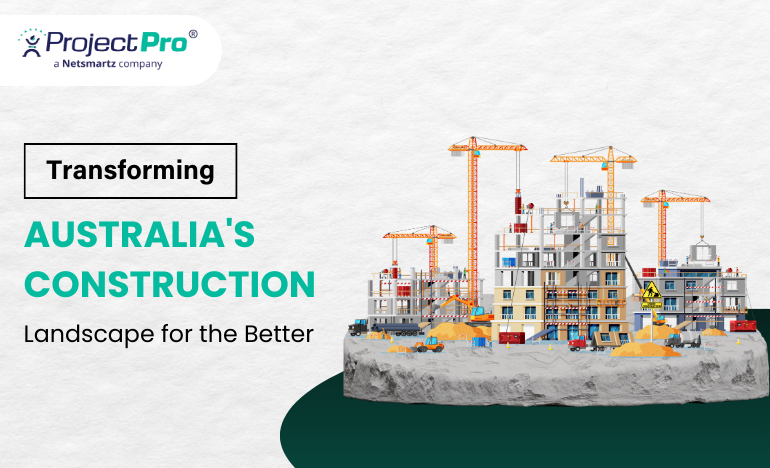Top Construction Technology Trends for 2021 - An Expert Roundup

The technology landscape is changing fast in the construction industry. The question that now arises for construction companies is not if they are going to adopt technology. But, when and which technologies they should opt to increase their profit margins and revenue in 2021 and years ahead.
While construction technology is a collective term prevalent in this industry, businesses now need to figure out the use cases of different technologies and how they can streamline operations to stay competitive in the modern digital world.
To help construction professional find the answer to this question, we reached out to a few experts and asked them one specific question:
What are the Most Important Construction Technology Trends for 2021?
We were completely blown by the answers we received and the willingness these experts showed to help others in the community. They took time out of their hectic schedule and shared what they think are the upcoming trends for the years to come.
In this blog, we will be featuring the viewpoints of four influencers to provide you some insights on ConTech trends for 2021. So, let’s dive into experts opinions:
1. Data is a Goldmine for Construction – Travis Voss

Gather it, store it, connect it, analyze it, learn from it — data for construction businesses is like an effective solution geared towards accurate analysis and predictions that can bring a real increase in ROI. In 2021, it can be a game-changer for construction businesses for its ability to help them look beyond the box, enable smart decision making, predict the ever-changing business scenarios, and reduce costs.
Interoperability/Integration/Common data exchanges are going to be the norm in the years ahead. More project teams hopefully are starting to catch on to the idea of enabling project documentation to flow between systems better thus reducing error, speeding up response time, and alleviating manual repetitive tasks that don’t add much value to the project. Allowing the people who do those tasks to be more analytical and proactive in their roles.
Also, with a focus on reducing the time-to-market, businesses will adopt DFMA. This is not specifically a Construction Technology trend, but there are a lot of technologies utilized in making this happen.
Another trend that I anticipate catching fire is Robotics. Not a “right now” thing in many places, but some of the robots are becoming mature enough to be used alongside humans to reduce those mundane/repetitive tasks and augment workers.
2. Wearables, Robots, and Drones – Christy Crook

The major problems faced by the construction industry are less productivity and safety of workers. I believe, in 2021, technologies that help improve both these things will become the trend in the construction industry.
For example, Wearable that is embedded with biometrics sensors can keep a track of an individual’s body temperature, heart rate, and other things to immediately notify managers in case of any hazardous situation. So, Wearables are surely going to be a hot trend in 2021 with already rising health risks in individuals due to COVID.
Other tech trends can be Robots and Drones that help improve the productivity of construction employees. Drones let construction workers work remotely and add huge value to the projects. Also, these technologies can reduce the number of workers required on-site during the pandemic. Along with the many advantages Drones and Robots provide, their adoption is likely to become a trend in 2021 and years ahead.
3. Systematize the Work before Tech Adoption – Aarni Heiskanen

The construction industry leapfrogged in digitalization because of the worldwide pandemic. Hopefully, we will be in the clear soon regarding the health issue, but the need to rationalize work on construction sites will prevail.
Today, construction projects need a way to capture all the communication and documentation fast. I believe Integrated Data Environment (IDE) is a practical technical solution for that purpose and its usage should be more than anything else in 2021. It gives businesses a recorded and uninterrupted data flow for the entire project.
Also, the health and safety of employees is a big concern these days. So, technologies that can track people’s movements, monitor compliance with health recommendations, and warn about potential hazards, will prevail. Artificial intelligence systems can classify information and predict issues automatically from video and sensor data. For example, a system can alert if it sees a worker without proper personal protective equipment.
Training is an essential part of safety. Several companies provide virtual reality solutions for training. They simulate real-life situations where workers face hazards and require the trainee to react to them correctly.
All the aforementioned technologies pave the road to more industrialized construction where design, manufacturing, logistics, and installation form a digitalized workflow. Digitalizing unstructured, unrepeatable work seldom creates huge benefits, so before resorting to new technologies, contractors should first systematize their work.
4. Human Connection is Crucial before Technology – Brent Darnell

I believe that in some ways, we are starting to rely too much on technology at the expense of human connections. Without human connection, technology becomes a crutch. We need technology, but only the tech that connects us more. If the tech companies established human connections prior to implementing the technology, the technology would be much more successful. So, you need to develop a mindset for innovation before figuring out what tools and technology you require.
There are many tools and methods out there that are supposed to improve quality and productivity in construction. Integrated Project Delivery, Lean, Design-Build, building information modeling (BIM), web-based information sharing tools, computer-aided design systems, augmented and virtual reality, drones, personal and handheld computers, tablets, smartphones, apps, digital cameras, lasers, automated transits, and project management and accounting software – there are many of them. However, you need to look for solutions that fit your needs.
We must all contribute our knowledge to come up with better ways to build projects. We must bring every innovation and technological advancement to bear including 3D printing, the internet of things, artificial intelligence, laser scanning, drones, robotics, prefabrication, modularization, and collaborative project delivery.
Talk about innovation! It is Mount Everest of endeavors, but we can do it. There are a number of intelligent people out there. And when we all brainstorm our ideas, we can improve everything about our business.
The Crux
An increase in technology adoption is introducing a complete digital transformation in the construction industry. There are several examples of how tech can prove as a boon for construction businesses and solve its long-standing problems like less productivity and low-profit margins. Mentioned above are the viewpoints of industry experts on what you should know before you plan to transform your construction business digitally.
So, take a note and drive your business with what best suits its needs.




.jpg)


